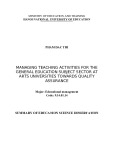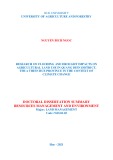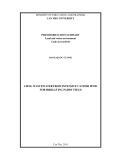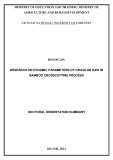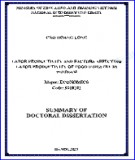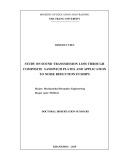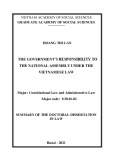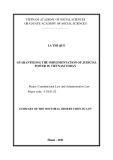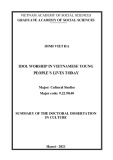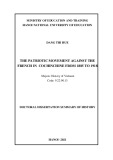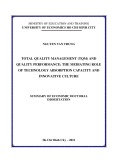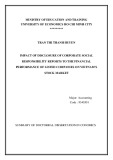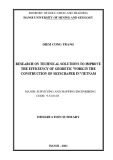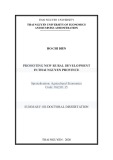
1
CHAPTER 1 – RESEARCH OVERVIEW
1.1 THE REASONS FOR CHOOSING THIS TOPIC
In the process of making buying decision, the source of information that consumers often use is consulting
from relatives or friends (Hennig-Thurau et al., 2004). The direct way of communication to consult on goods is called
traditional word-of-mouth (WOM). WOM is seen as a reference channel for goods of value to consumers and they
believe in this source of information rather than information from advertising. WOM information is usually only spread
in a small group and has a narrow scope of influence. In WOM communication, the form of communication is face to
face interaction and the source of information is relatives or friends, so consumers can easily accept WOM information.
Previous studies have shown a relate between purchase intent and WOM information acceptance (Glynn Mangold,
Miller & Brockway, 1999; Allsop, Bassett & Hoskins, 2007).
The statistics around the world show that before buying, consumers view information related to goods on
average at 10.4 different sources; 92% of consumers read reviews of goods before making a purchase; 63% of
consumers buy from websites that have additional user reviews; Consumer goods reviews have 12 times more
confidence than product descriptions provided by the producer (Charlton, 2015). In Southeast Asia, on average, 88% of
consumers place the greatest trust in recommendations from family and friends. In Vietnam, this figure is a bit larger, at
89%, in addition, about 70% believe in eWOM information circulated online (Nielsen, 2015).
Compared to WOM, eWOM is easier to spread and has a much larger influence, due to the above The Internet
allows people to send eWOM information online in various forms and at low cost. However, different from WOM,
eWOM information is generated and spread by anyone and therefore consumers need other grounds for acceptance.
receive eWOM information (Cheung & Thadani, 2010). Previous studies on the issue of Electronic Oral Transmission -
eWOM shows that the Acceptance of eWOM information is the most important factor affecting the intention of
purchasing goods of Consumers (Duhan, D. Johnson, S. Wilcox, 1997; Li & Zhan, 2011; Fan et al. , 2013). Therefore,
the research Factors affecting the acceptance of eWOM information are increasingly urgent need.
In essence, eWOM information is non-commercial advertising information and therefore the communication
eWOM is the process of convincing recipients of eWOM information to believe in and use eWOM to support the
decision-making process purchase of goods (Babić Rosario et al., 2016). In addition, according to research by
Greenwald (1968) shows that there are relationship between the acceptance of informational content and persuasion
through communication. Effectiveness of thecommunicative persuasion can be measured by the acceptability of the
information content.
Due to the easily-generated and contagious nature of eWOM information, consumers may encounter the
information overload effect when referencing too much information eWOM. However, there is little research on the
effects of the information overload to eWOM information acceptance (Luo et al., 2013). A consequence of information
overload is that the consumer may rely on other signals of eWOM information rather than on the content of the eWOM
information in reference - it could be ratings or consumer consensus of a certain commodity review. Information about
ratings or consensus reflects the influence aspect of eWOM (Cheung et al., 2009; Chou, Wang & Tang, 2015).
On the other hand, due to the high persuasion of eWOM information, market makers are inclined to using fake
eWOM information (called fake eWOM) makes consumers mistakenly refer to it aseWOM information is generated by
a particular consumer. The presence of fake eWOM information increases the exposure skepticism and reduce
consumer confidence when consulting eWOM information before making a purchase. So how consumers react to
eWOM information when they suspect it is a fake eWOM information? Will they accept receive fake eWOM
information if the content of this information is sometimes high quality? However, there is little research available on
the effect of eWOM information skepticism on the adoption of eWOM information (Sher & Lee, 2009).






